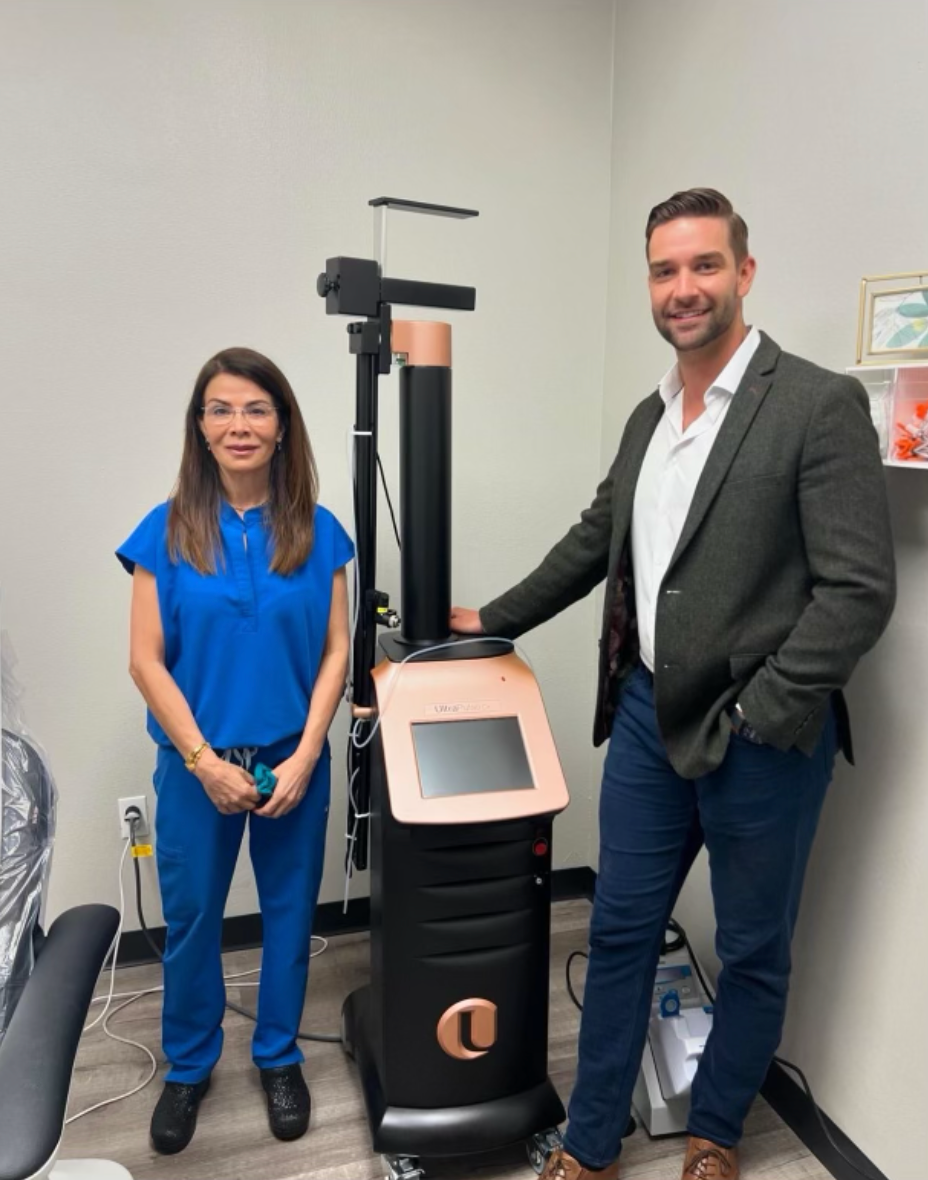Laser skin resurfacing is a highly effective cosmetic procedure designed to rejuvenate
the skin by addressing common concerns such as wrinkles, fine lines, acne scars, and
sun damage. This advanced treatment utilizes laser technology to remove damaged
skin layers and stimulate collagen production, leading to a smoother, more youthful
complexion. But how exactly does it work? Let’s explore the science behind laser skin
resurfacing.
Understanding the Process
Laser skin resurfacing works by using concentrated beams of light energy to precisely
target and remove damaged skin cells. The laser delivers heat energy to the skin,
prompting the body’s natural healing response. As the treated skin regenerates, it
becomes firmer, smoother, and more even in tone.
There are two primary types of laser resurfacing treatments:
- Ablative Lasers: These lasers, such as CO2 and Erbium lasers, work by
vaporizing the outermost layers of skin. This triggers collagen production and
promotes the growth of new skin. Ablative treatments provide dramatic results
but require more downtime for recovery.
- Non-Ablative Lasers: These lasers, such as fractional laser therapy, work
beneath the skin’s surface without removing outer layers. Instead, they heat the
deeper layers of skin to stimulate collagen growth gradually. While results may
take longer to appear, non-ablative lasers require minimal downtime.
What Can Laser Resurfacing Treat?
Laser skin resurfacing is effective in addressing a variety of skin concerns, including:
✅ Wrinkles and Fine Lines – By stimulating collagen production, laser resurfacing
helps smooth out lines and wrinkles, particularly around the eyes and mouth.
✅ Acne and Surgical Scars – The laser breaks down scar tissue and encourages new
skin formation, reducing the appearance of acne scars and surgical scars.
✅ Sun Damage and Hyperpigmentation – Sunspots, age spots, and uneven
pigmentation can be effectively treated with laser therapy.
✅ Uneven Skin Tone and Texture – The procedure improves overall skin quality,
making it look fresher and more refined.
The Recovery Process
Recovery time depends on the type of laser used. Ablative laser treatments often
require 1-2 weeks of healing, during which the skin may be red, swollen, and sensitive.
Non-ablative treatments have little to no downtime, making them ideal for those with
busy schedules.
Post-treatment care is essential to maximize results. Patients should: ✔ Keep the skin
moisturized. ✔ Avoid direct sun exposure and wear SPF daily. ✔ Follow their provider’s
aftercare instructions to promote healing.
Final Thoughts
Laser skin resurfacing is an advanced cosmetic treatment that offers significant
improvements in skin texture, tone, and overall appearance. By understanding how the
process works, individuals can make informed decisions about whether this treatment is
right for them. Consulting with a skincare professional will help determine the best laser
option based on individual skin concerns and goals.


